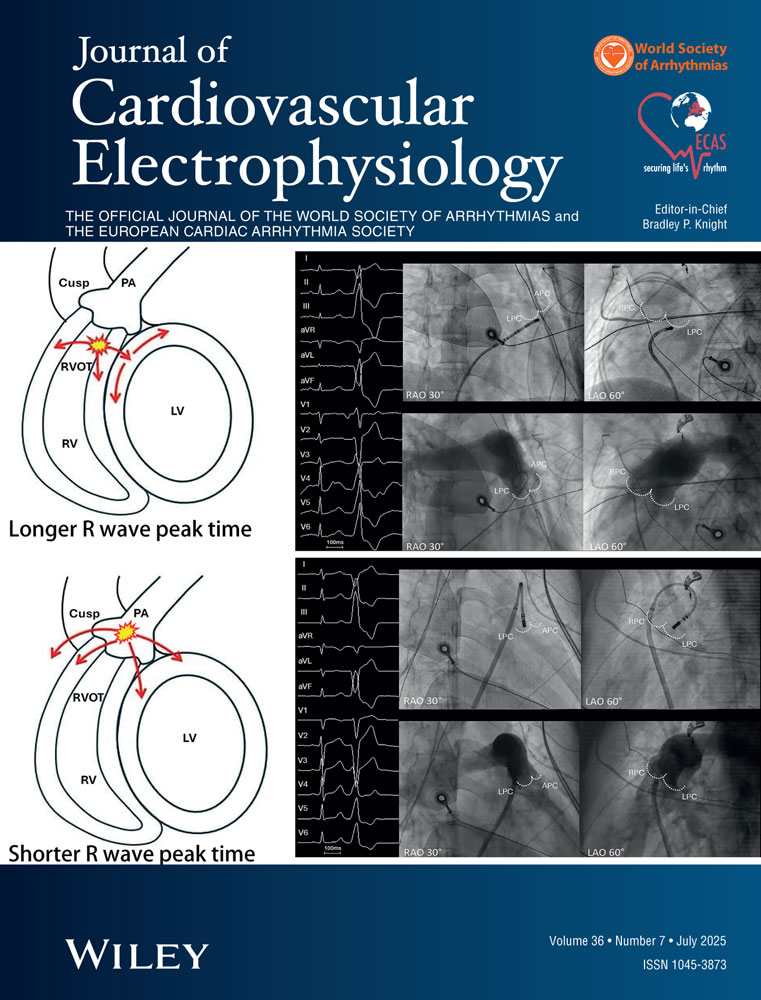Radiofrequency Catheter Ablation of the Left Bundle Branch in a Canine Model
Abstract
Left Bundle Branch Ablation. Introduction: Transcatheter ablation of the left bundle branch may be considered for management of selected macroreentrant ventricular tachycardias. Left bundle ablation can also change the sequence of left ventricular contraction and may simulate pacing in hypertrophic obstructive cardiomyopathy. The purpose of this study was to determine electrophysiologic and anatomic parameters for successful selective transcatheter left bundle ablation in a canine model.
Methods and Results: A catheter was advanced to the left ventricular apex and the tip deflected toward the septum, until a discrete left bundle potential (LBP) was found. Radiofrequency (RF) energy was then applied until left bundle branch block or complete AV block occurred. In 29 (85%) dogs, an LBP (mean LBP-V 16 ± 3 msec; range 10 to 20 msec) was identified resulting in successful left bundle ablation. In 5 (15%) dogs, a similar potential (mean potential-V 28 ± 4 msec; P = 0.001 vs LBP-V) was identified, but RF energy application produced complete AV block. The A:V electrogram ratio at the successful LBP ablation site was < 1:10 in all 29 dogs successfully ablated, but only 2 (40%) of 5 dogs in the unsuccessful group (P = 0.0017). In 4 successfully ablated dogs, the right bundle potential was mapped and complete AV block was created by RF energy application, confirming that the left bundle was completely ablated. In 9 dogs, the left bundle and AV junction were sequentially ablated with 1 lesion at each site. Postmortem examination showed 2 discrete lesions 1.2 ± 0.7 cm apart.
Conclusions: Selective transcatheter left bundle ablation was successfully guided by the LBP. The distance between the AV junction and the main left bundle was 1.2 cm in this canine model. An A:V ratio < 1:10 and an LBP-V time < 20 msec appear to minimize the risk of AV block. Prudent use of similar techniques may cure macroreentrant ventricular tachycardias and reduce the need for permanent pacing in hypertrophic obstructive cardiomyopathy.




